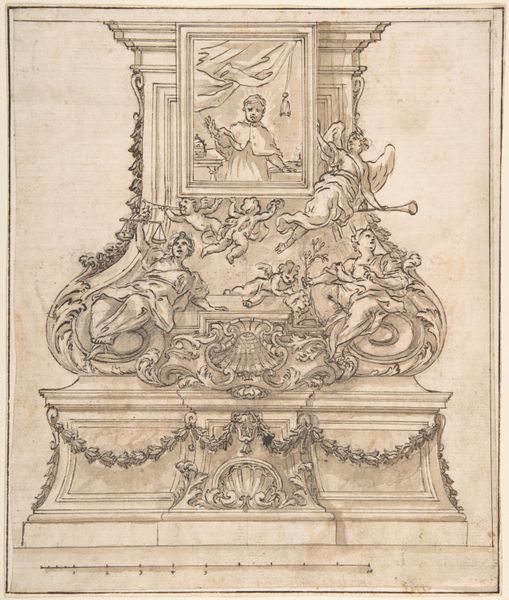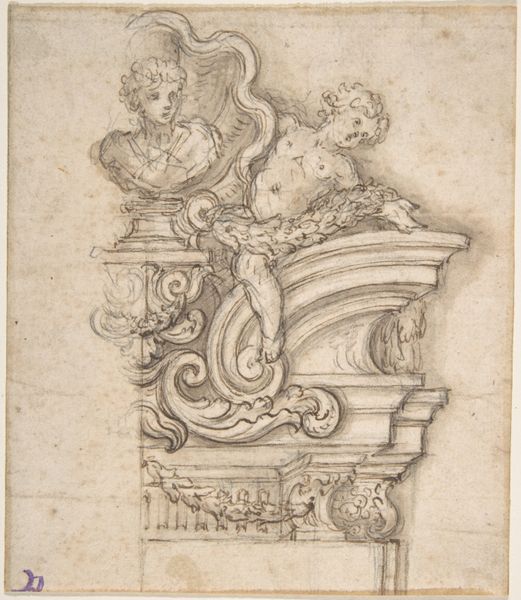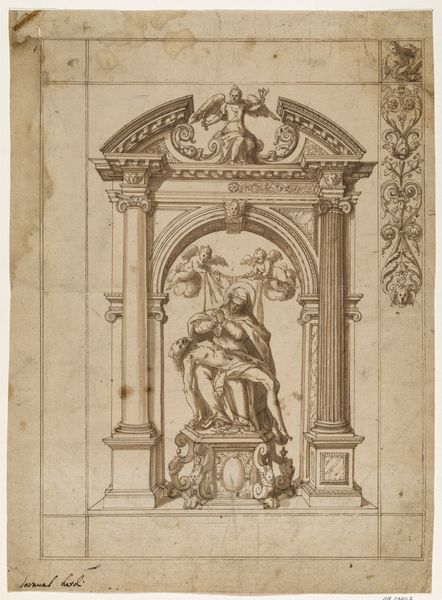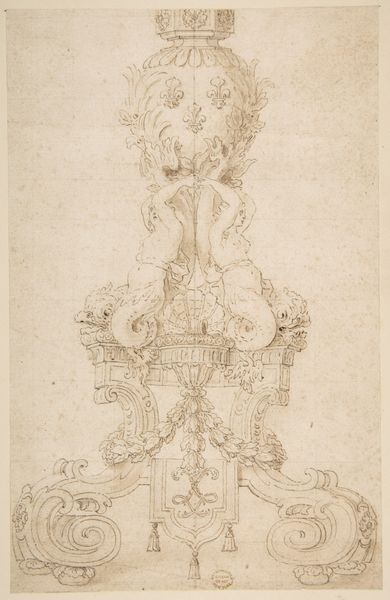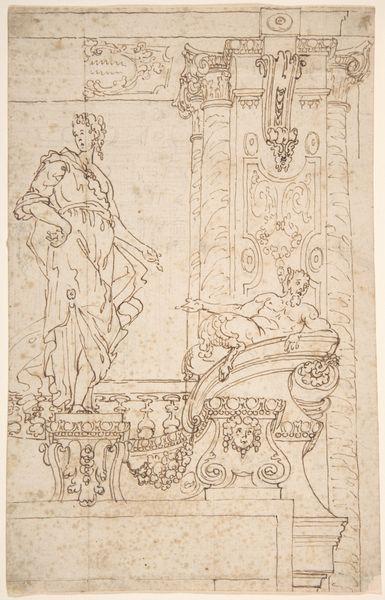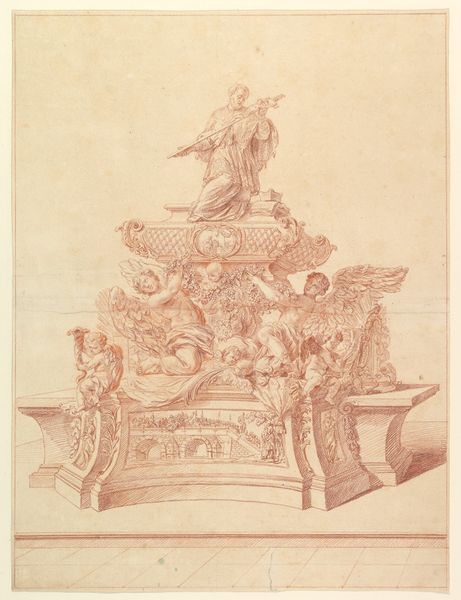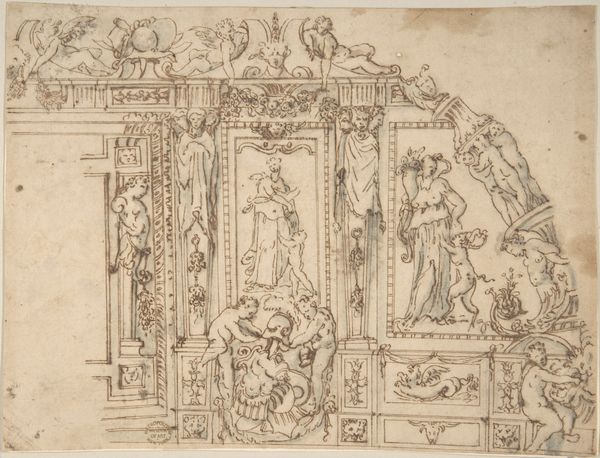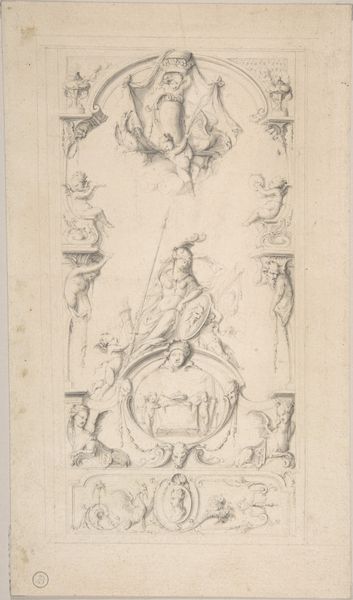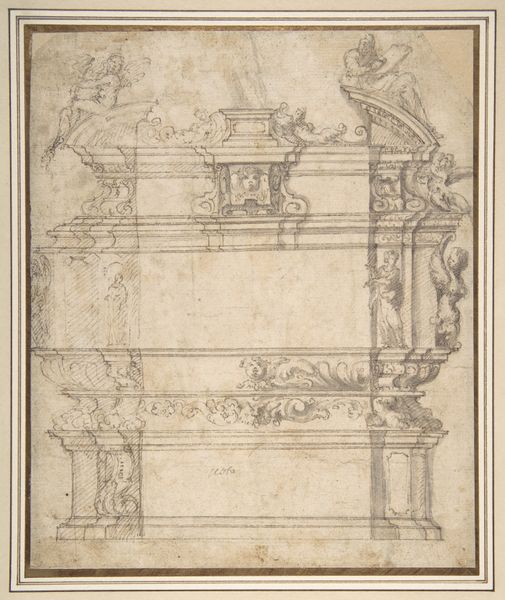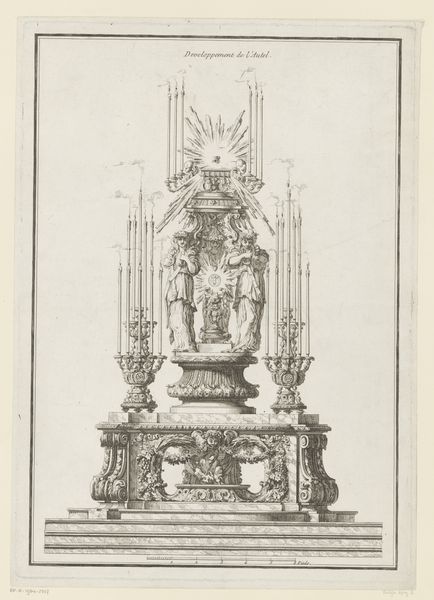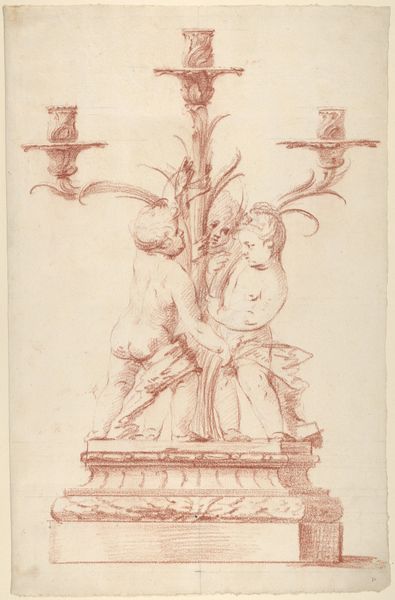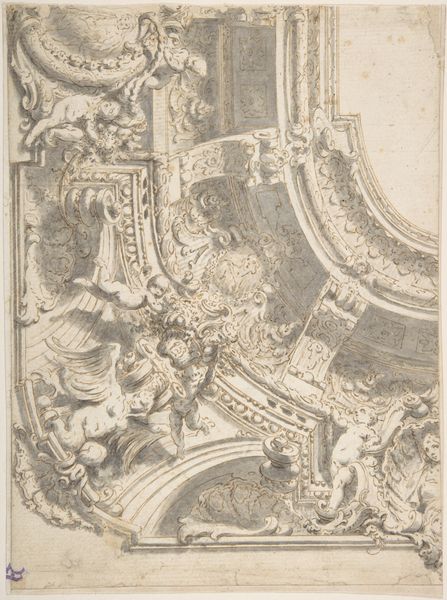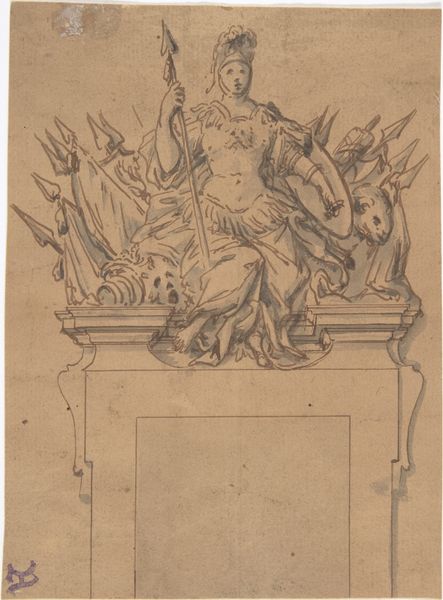
drawing, ink
#
drawing
#
baroque
#
pen sketch
#
figuration
#
form
#
ink
#
history-painting
Dimensions: sheet: 48 x 30.1 cm (18 7/8 x 11 7/8 in.)
Copyright: National Gallery of Art: CC0 1.0
Editor: So this is "A Reliquary of Saint Sigismondo," a drawing done in 1719 by Giovanni Battista Foggini, using ink. I find the use of line to create depth really interesting, and the baroque style gives it a certain grandeur, even in this preparatory sketch. What's your take? Curator: What strikes me immediately is how this ink drawing embodies the transition of an idea, a plan, through material means. Foggini wasn't just visualizing a reliquary; he was actively shaping its production. The very act of sketching, the repetitive, skilled labor involved in the ink strokes, dictated the form it would eventually take. Editor: So, you're focusing on the physical process? Curator: Precisely. Consider the economic aspects: who supplied the ink and paper? What was Foggini's commission? The Baroque style wasn't simply an aesthetic choice; it was a highly marketable commodity, dependent on patronage and skilled artisans. Every line, every flourish, represents a material investment and a social relationship. Look at the detail in the floral ornaments - a clear demonstration of labor. Do you see any contradictions arising from the depiction of saintly devotion combined with the work required? Editor: Well, it does seem like the opulence of the reliquary, which requires considerable work, clashes a bit with the ideas of simplicity often associated with sainthood. Curator: Exactly. It is a commodity manufactured by many to praise humility. It makes you think, doesn't it? Editor: It really does. Thanks, I hadn’t thought of analyzing the sketch in those terms before! Curator: Glad I could illuminate it for you; the material conditions are too often overlooked.
Comments
No comments
Be the first to comment and join the conversation on the ultimate creative platform.
